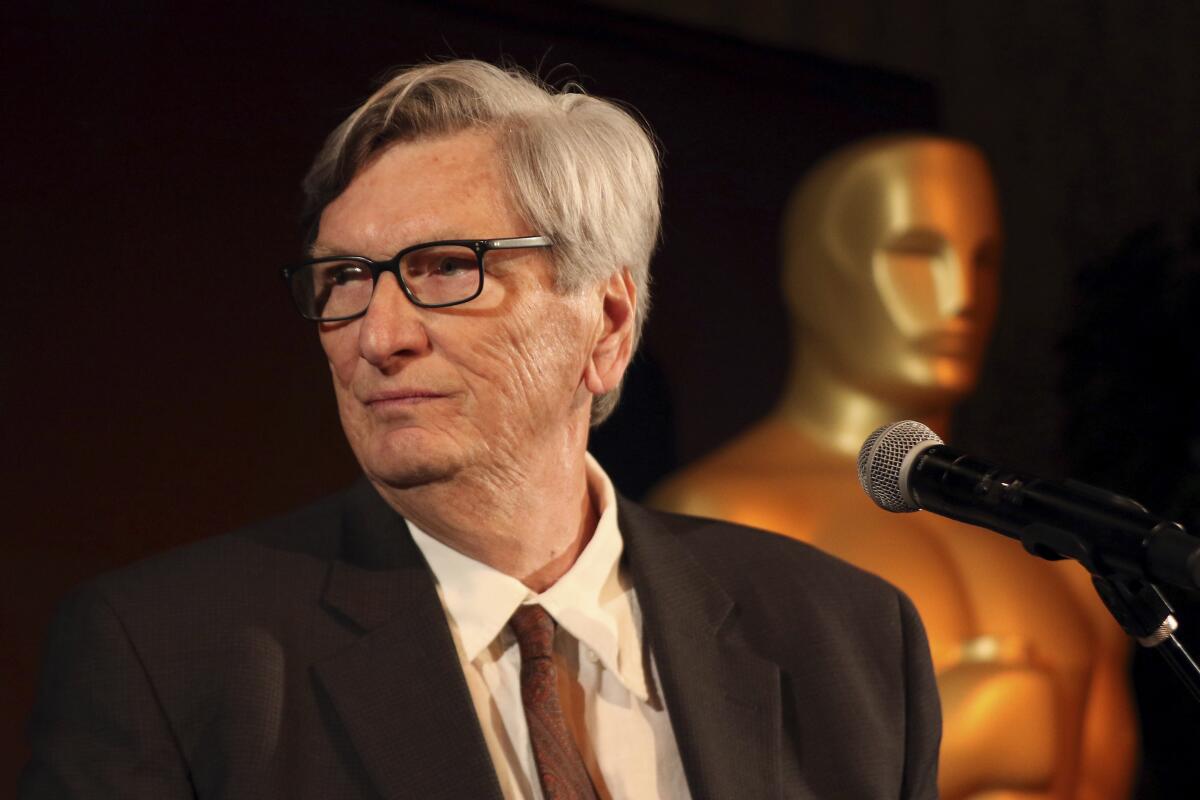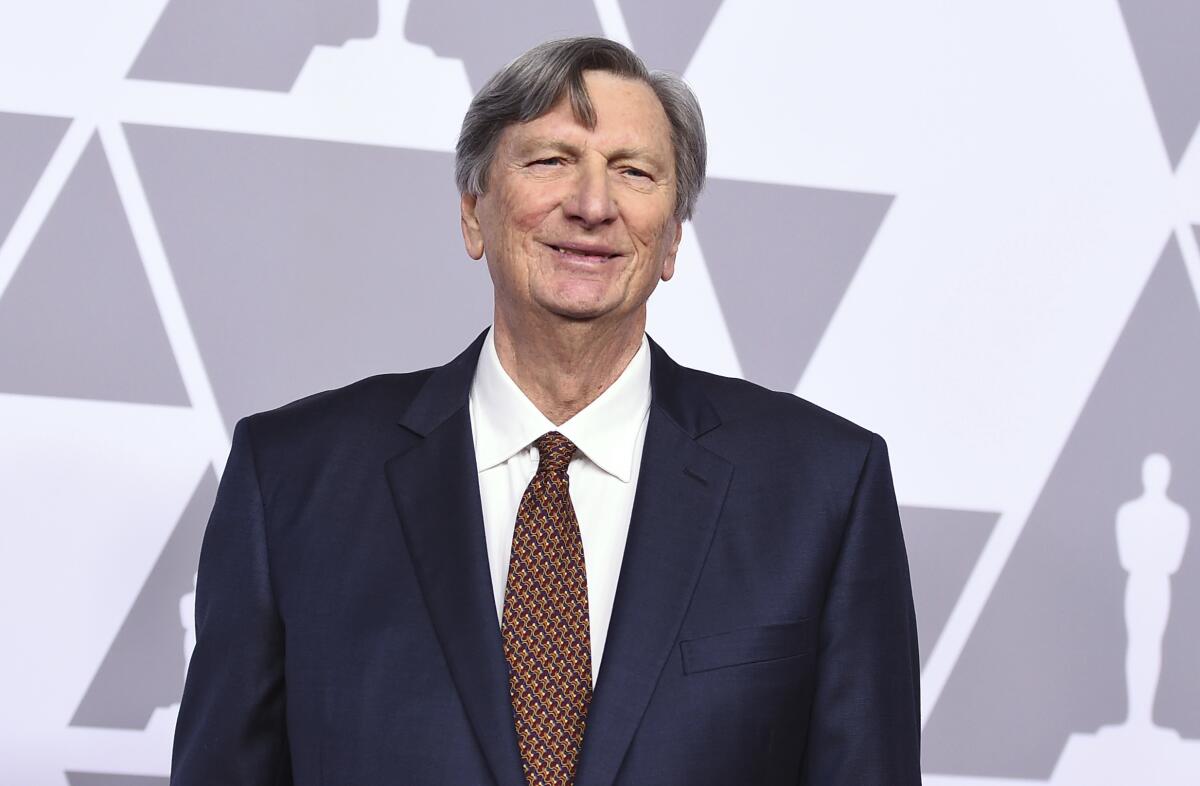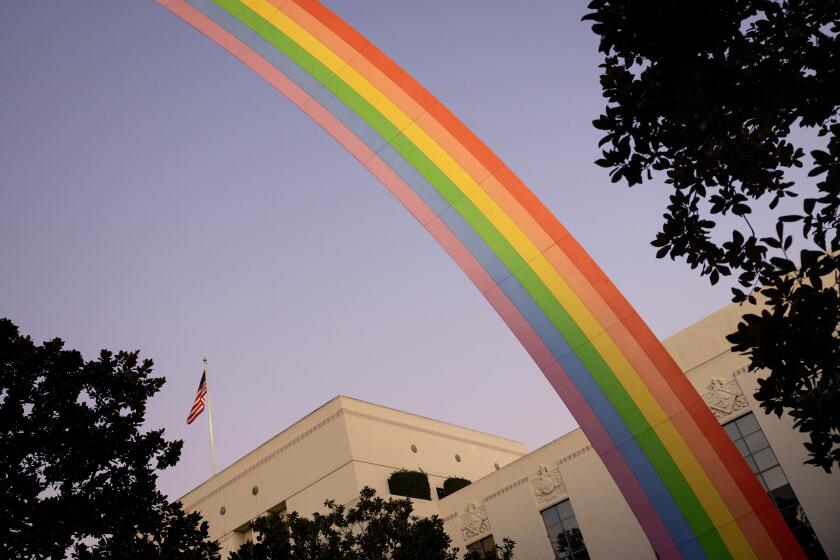John Bailey, ‘Ordinary People’ cinematographer and ex-film academy president, dies at 81

- Share via
John Bailey, who worked as a cinematographer on such films as “Ordinary People,” “The Big Chill” and “Groundhog Day” and went on to serve as president of the motion picture academy during a period of tumult and transformation, has died at age 81.
Bailey died Friday in Los Angeles, according to his wife, Oscar-nominated film editor Carol Littleton (“E.T. The Extra-Terrestrial). No specific cause was given.
”It is with deep sadness I share with you that my best friend and husband, John Bailey, passed away peacefully in his sleep early this morning,” Littleton said in a statement. “During John’s illness, we reminisced how we met 60 years ago and were married for 51 of those years. We shared a wonderful life of adventure in film and made many long-lasting friendships along the way. John will forever live in my heart.”
Born in Missouri and raised in Norwalk, Bailey got his start in Hollywood as an assistant cameraman on the 1971 film “Two Lane Blacktop” and quickly earned a reputation for his skill and versatility.
Over the next five decades, Bailey went on to work as a cinematographer on more than 80 films spanning many genres. Many of the movies he worked on went on to become hits, including “Silverado,” “The Accidental Tourist,” “In the Line of Fire,” “As Good as It Gets,” “How to Lose a Guy in 10 Days” and “The Sisterhood of the Traveling Pants.”
Invited to join the film academy’s cinematographers branch in 1981, on the heels of his work on the films “American Gigolo” and “Ordinary People,” Bailey later went on to serve as an academy governor for 14 years before being elected in 2017 to become the organization’s president.

The first cinematographer to lead the academy, Bailey was seen at the time as a surprising pick to take the reins of the organization, which was undergoing a period of rapid and often difficult change in the wake of the #OscarsSoWhite controversy.
During Bailey’s tenure, the organization made significant strides to diversify its ranks, opening its doors to thousands of new members from around the world. In 2019, the organization invited more women than men to join for the first time, and over the course of Bailey’s tenure the number of people of color in the group more than doubled. Under Bailey, the academy also made major strides toward finally opening its long-planned museum.
But Bailey’s time at the helm of the academy was also marked by tumult and controversy, as the organization navigated the effect of the #MeToo movement and struggled with declining ratings for the Oscars telecast.
Just weeks after Bailey’s election in 2017, the Harvey Weinstein sexual misconduct scandal broke, thrusting the academy into the center of Hollywood’s #MeToo reckoning. The organization soon ejected Weinstein along with Bill Cosby and Roman Polanski and adopted a new code of conduct. Bailey himself would become the first public test of that code in 2018 when he faced a claim of sexual harassment against him. The claim was investigated and ultimately dismissed by the academy.
In 2018, in an effort to reverse the erosion in viewership for the Oscars, the academy announced the creation of a “best popular film award,” only to scrap the idea weeks later amid criticism that it was pandering and ill-conceived. In 2019, the Oscars emcee, Kevin Hart, dropped out amid controversy over past homophobic jokes, leaving the telecast hostless for the first time in 30 years. A plan that year to move the presentation of several categories to commercial breaks stirred a widespread uproar among academy members and was scrapped just days before the show.
For Bailey, who was more at ease behind the camera than in front of it, being in the line of fire was not always comfortable. But he accepted with equanimity the responsibility of leading the tradition-bound organization through the unprecedented challenges it faced.
“Look, for an organization that some people like to say is irrelevant and is out of touch with the times, there always seems to be a tremendous amount of interest in what is going on inside the academy,” he told The Times in 2018. “My own feeling is, no matter what the academy does or says or determines as a course of action, there are going to be naysayers. It’s just the nature of it.”
Bailey served two one-year terms as president and then termed out of the position.
Hollywood’s twin strikes translated into a lost year of production for much of the industry with productions idle since last spring. SAG-AFTRA’s strike against major media companies stretched 118 days.
Current academy Chief Executive Bill Kramer and President Janet Yang issued a statement praising Bailey’s service to the organization, which included working on a number of committees and on the museum’s board of trustees.
“John was a passionately engaged member of the academy and the film community,” Kramer and Yang wrote. “He served as our president and as an academy governor for many years and played a leadership role on the Cinematographers Branch. His impact and contributions to the film community will forever be remembered.”
In recognition of his illustrious career, in 2015 Bailey was awarded a lifetime achievement award by the American Society of Cinematographers, on whose board of governors he had served.
Bailey is survived by Littleton, with whom he worked on more than a dozen films and who also served as an academy governor.
More to Read
Only good movies
Get the Indie Focus newsletter, Mark Olsen's weekly guide to the world of cinema.
You may occasionally receive promotional content from the Los Angeles Times.












